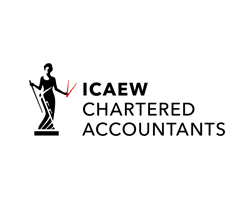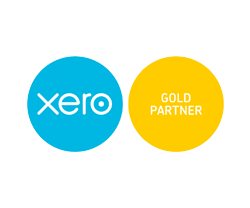August 19th, 2019Should I Incorporate My Property Business? Part V
Phase 3: Retirement, or “being too old for this sort of thing”
The retirement phase of property ownership is the one that is the most difficult to plan for, largely because it’s so far into the future for many landlords and it has more variables to consider.
This means the process can become extremely complicated even for landlords with a single property and more-so for landlords with multiple properties and an unclear strategy. On a property-by-property basis it essentially boils down to analysing two scenarios:
- Keep the property to earn in income in retirement
- Sell the property to realise the capital growth
So in this phase, not only is a comparison between personal and company ownership required, but also a comparison between whether to keep or sell the property. It’s therefore no surprise that this blog is the longest of the six.
Income in retirement
Property held personally
Previously, we’ve assumed that landlords don’t need the income generated from property in order to live, i.e. they have other income funding their lifestyle.
In retirement this is often not the case as income is normally significantly lower than during working age.
The likelihood that rental income will be needed to supplement retirement income is therefore high. So we need to consider now if earning that income in a company leads to more net income than if the property was held personally.
To work this out, we’ll return to the example from the previous instalment in this series. In this example, Max was a higher rate taxpayer with £10,000 of rental profit before interest of £5,000, giving profit before tax of £5,000. Max transferred the property into a company which meant he incurred more annual costs so profit before tax reduced to £3,450. This was still beneficial to him due to the avoidance of higher rate tax.
In retirement, Max receives combined state and occupational pension income of £15,000, making him a basic rate taxpayer. He continues with the interest-only mortgage. Would Max have been better keeping the property out of the company? Let’s have a look.
If he had held the property personally, Max’s profit is £5,000 on which he would pay tax at 20%. This gives a tax bill of £1,000 and a net income of £4,000.
Property held in a company
We can see immediately that this net income is higher than net income from the company even before corporation tax and the tax on getting the cash out of the company has been considered. To quantify the position though, we’ll still run through the numbers:
The company pays £585 of tax giving net profit of £2,865. Max declares a dividend for this amount with the first £2,000 tax free and the remaining £865 subject to the dividend tax basic rate of 7.5%. Total tax is therefore £650 giving Max a net income of £2,800.
Max was better off by £860 per year during his working life, but in retirement he finds that he’s worse off by £1,200 per year.
Max’s immediate thought may be to transfer the property back out of the company. Remember, though, getting a property out of a company is difficult and costly. The mortgage would need settling and Max would need to purchase the property for its market value, which would trigger a capital gain in the company. Not to mention stamp duty.
Succession
Limited companies can also be more expensive if the ultimate aim is to pass the properties on to the next generation.
When individuals die, the value of property is uplifted to market value during probate. So if the next generation choose to sell the property, then their cost for capital gains tax purposes is the probate value. This can often mean no capital gains tax if the decision to sell is near to the date of inheritance.
There is no such uplift in the value of properties held in limited companies. The value of the shares held in the company will be uplifted but no potential purchaser will want to hold shares in a property company. The only option, therefore, is for the company to sell the property and realise a larger gain than if the property was held personally.
Realise capital growth
The second option is to sell the property and realise the growth in capital value.
Property held personally
If property is held personally, the calculation of the gain is relatively straight forward: the sale price minus the purchase price minus costs of buying and selling the property. There are then reliefs available if you’ve lived in the property at some point, but in our example we’ll assume Max has never lived in the property.
Now, let’s say Max originally purchased the property for £95,000 and paid stamp duty, survey fees and legal fees totalling £5,000 giving a total cost to buy of £100,000. He sells the property in retirement when it is worth £175,000 and pays an estate agent £5,000.
So we can see Max has made a gain of £70,000. From this gain Max can deduct his capital gains tax annual exemption of £12,000 giving a taxable gain of £58,000. The capital gains tax due on this depends on which tax band the gain falls into when added to Max’s other income.
From earlier, Max has £15,000 of pension income. The higher rate tax threshold is £50,000 so £35,000 of the gain is taxed at the basic capital gains tax rate of 18% and £23,000 at the higher rate of 28%. Total tax is therefore £12,740.
Property held in a company
In a limited company, it is a two step process:
- The company realises a gain and pays corporation tax on that gain
- The shareholders take the gain out of the company – how this is taken out depends on individual circumstances
The calculation of the gain the company makes is exactly the same. Companies, however, aren’t entitled to reliefs such as principal private residence relief or the annual exemption but they pay a flat rate of tax on the entirety of any gain.
In Max’s case, let’s imagine that he transferred the property into the company a year after purchasing it when it was worth £100,000. The company uses this market value on the date of transfer as its purchase cost so the gain upon selling it is £70,000. The company pays corporation tax at 17% on this gain, giving a tax bill of £11,900.
The net gain left in the business is £58,100. How does Max pay this to himself? Tax exemptions should be utilised as far as possible and then the balance paid out in the form that yields the lowest tax rate. The order is as follows:
- The £2,000 dividend allowance – tax exempt
- The £12,000 capital gains tax annual exemption – tax exempt
- Basic rate dividend – 7.5%
- Higher rate capital distribution – 20%
When a company is closed down, the final distribution of cash can be either a dividend or a “return of capital” also known as a capital distribution. A capital distribution, as the name suggests, is subject to capital gains tax.
In order for the final distribution to qualify as a capital distribution, the cash in the company must be under £25,000. If more than £25,000, the distribution can still qualify as a capital distribution but the company must be formally liquidated. The cost of a liquidation would start at around £2,500.
With Max’s other pension income of £15,000, it is clear that if he wants to pay the whole amount out in one go then the optimum strategy would be to pay a dividend of £35,000 and then make a final distribution for the remaining £23,100 as a capital distribution.
This would yield dividend tax of £2,475 and capital gains tax of £2,220. When added to the corporation tax on the gain calculated earlier, Max’s total tax bill arising out of selling the property in the limited company is just under £16,600.
Max can reduce this by staggering the payouts from the company over two tax years:
- In the current tax year, a £35,000 dividend
- In the following tax year, an £11,100 dividend and a £12,000 capital distribution
So if Max pursues this staggered approach he can reduce the total tax to around £15,000, which is £2,260 more expensive than if he sold the property under personal ownership.
[Aside: There are some strategies to reduce Max’s tax bill even further but they involve taking the cash out over a number of years. Generally, the accountancy costs and hassle of maintaining the company would prohibit these strategies from being viable.]
In summary
As you can see, the comparison between holding property personally or in a company is a complicated one – and this has been with an exceptionally straight forward example. And of course, different circumstances will lead to different results.
In the final blog, we’ll be bringing everything we’ve discussed so far together.
Back to Part IV | On to Part VI





